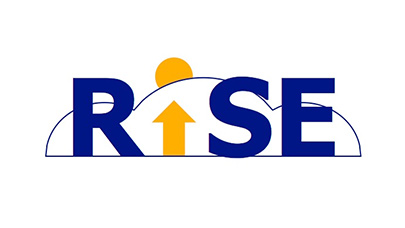
AI-Powered Bots Gearing Up to Serve You

(Joybakal/Shutterstock)
Get yourself ready for the bot invasion. Powered by artificial intelligence and fueled with big data, bots are gearing up to serve people the data, insights, and services they demand.
Bots are not new. Anybody who’s interacted with Apple‘s Siri, Amazon‘s Alexa or Microsoft‘s Cortana is familiar with the question-and-answer capabilities of bot technology, which uses natural language processing and machine learning to answer questions or provide information via email, social media, messaging platforms, and mobile apps.
But the bots you’ve seen up to this point will pale in comparison to the bots of the future. Consider that, by 2020, the average person will have more conversation with bots than with their spouse, according to Gartner.
“With the rise of Artificial Intelligence (AI) and conversational user interfaces, we are increasingly likely to interact with a bot (and not know it) than ever before,” Gartner analyst Heather Pemberton Levy wrote in a blog post last month.
AI-powered bots will also be on the minds of the folks in the new RISElab, which is replacing the legendary AMPlabat developed Apache Spark and Apache Mesos at the University of California, Berkeley.
The new lab, which will begin work early next year, is focusing its efforts on building a Secure Real-time Decision Stack (SRDR) that will be used for, among other things, enabling real-world automation like self-driving cars and (you guessed it) bots.

Microsoft’s chatbot “Tay”
Bots may have gotten a bad rap in the minds of many, thanks to a series of regrettable “chatbots” that were unleashed on social media in recent months. The Microsoft bot Tay, for example, was released on Twitter earlier this year with the goal of learning from the social media platform. But thanks to Internet jokers, the bot was “trained” to spew hateful racist rhetoric instead.
However, those regrettable incidents aren’t slowing down development of bot technology. Yesterday Microsoft launched the Azure Bot Service, which the company touted as the first public cloud-based bot service that’s based on the Microsoft Bot Framework. The bot service also gives developers the option to plug their creations into Microsoft Cognitive Services, thereby enabling bots “to see, hear, interpret, and interact in more human ways,” the company says on its blog.
Get used to the bots, says Microsoft CEO Satya Nadella. “Just like you built websites in the past, or mobile applications in the past, you’re going to now start building bots as new interfaces, new applications,” Nadella said this week at a conference Australia, according to a story in Mashable. “You’re going to take every business process and build a new bot interface. But to do that you need to have natural language understanding, and that’s what the bot framework enables for every developer.”

Bot technology development will be tackled at RISElab, successor to AMPlab
Not to be outdone, social media giant Facebook is bolstering its bot service, which it launched as a beta earlier this year for the Messenger platform. Facebook sees the bots a way for people to get customized information, such as weather forecasts or traffic updates, or to conduct e-commerce, such as automatically ordering flowers by responding to flower companies chat bot.
Now Facebook is introducing more analytics to its Messenger-based bot platform, including the capability to track the bots and to view detailed performance data about the bots, including demographic details of the humans who interact with the bots.
The idea is to give developers more tools to help track how users engage with bots, including the paths that users took, such as starting out chatting with a bot and later being transferred to a human-based customer service representative. Facebook foresees companies building cross-platform funnels that track paths of user engagement across multiple mediums, like web apps, mobile apps, and now bots.
Considering that more than 34,000 developers have built bots since Facebook launched the platform in April (Facebook’s number), it would appear that the bots have legs.
Sisense is also building a bot-based user experience for its end-to-end analytics platform. The new Sisense BI Bots unveiled yesterday by the New York analytics firm is designed to enable users “to engage in two-way instant-message conversations about their data.”

(Chesky/Shutterstock)
Sisense says its BI Bots function as an “on-call business analyst” that allows users to consume insights in plain English sentences through common messaging platforms like Facebook Messenger, Skype, Slack, and Telegram. Additionally, the bots can function as alerts to push data and insights out to business users.
Sisense BI Bots are the latest in the company’s Everywhere campaign, and follow similar developments that tie BI insights to the Amazon Echo and the IoT light bulb.
It’s all about making the analytics more easily consumable, says Sisense CEO Amir Orad. “We have seen a dramatic shift in the BI marketplace in recent years as data discovery and self-service technologies have sought to democratize business intelligence,” Orad says in a press release.
Clearly, the world is primed for a bot revolution. Fueled by big data collection and advances in deep learning, natural language processing and computer vision algorithms are getting better at deciphering the world around us and understanding coded human communication. People are also becoming more comfortable interacting with machines (although there is always room for improvement.)
When you combine the improved technology, the warming to machines, and the ongoing desire for ever-more personalized experiences, it’s clear that bots are here to stay.
Related Items:
RISELab Replaces AMPLab with Secure, Real-Time Focus
How Machine Learning and Push Computing Can Pull Employees In
AI is Coming, Prompting New IT Security Concerns































